Complete guide to feeding newborn heifers
The first few hours of a calf’s life determine how that animal will go on to perform throughout its lifetime.
Calving by two years old is now deemed a prerequisite on dairy farms, but dairy heifers that fail to grow adequately won’t meet this all-important target.
Independent nutritionist Hefin Richards says, “Until she’s a cow, she is a cost. So we have to bear in mind how quickly we can realistically get to that point. In the UK as an industry we are calving at 28-29 months, so there’s huge scope for bringing this down. Heifers that calve by 24 months are cheaper to rear and produce more milk throughout their lifetime”.
Below, we summarise the guidance on how heifer calves should be fed in the first few hours, weeks and months of life, up until weaning, to ensure they hit vital targets.
Colostrum management
Colostrum is a true “superfood” and if fed correctly, it can provide the calf with immunity to fight off disease challenges.
However, calf rearers have a short window to ensure antibodies are absorbed to their full potential, said Mr O’Sullivan. He explained how much should be fed and how quickly:
Quantity: 10% of bodyweight.
Quickly: Three litres in the first three hours of life. The absorption of immunoglobulins drops significantly six hours after birth.
Quality: Measure colostrum with a refractometer. Aim for more than 22% on the Brix scale for Holsteins and more than 18% for Jerseys. At least 80% of your colostrum tested should be good quality. If it isn’t, it could indicate problems with dry cow and transition management.
Cleanly: Bacterial count of less than 100,000 colony-forming unit (cfu)/ml. Total plate count and faecal coliforms below 10,000 cfu/ml. If it doesn’t meet cleanliness standards, absorption rates can drop by 50%.
Safely: Colostrum, if frozen, should be thawed at no more than 80C for 15 minutes. A higher temperature will denature the antibodies.
Quantify: Bloods can be taken in the first week of life to check the volume of colostrum antibodies that have been absorbed into the calf’s bloodstream. Ask your vet to take some samples and monitor the results.
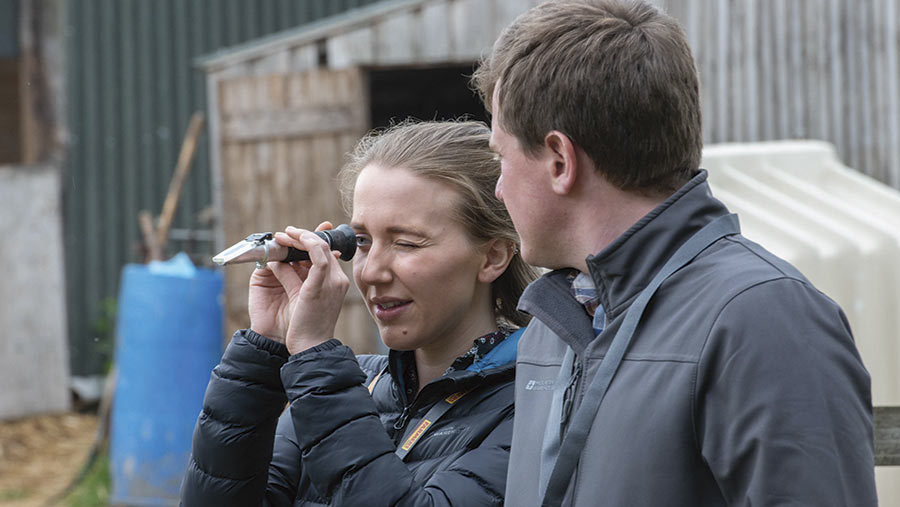
© BillyPix
Choosing a milk replacer – what to look for
Skim or whey-based powders?
Skimmed milk powders are typically about 80% casein and 20% whey. The casein forms a clot in the abomasum and is digested like whole milk – slowly over time.
In comparison, whey-based milk powders are digested much more quickly and in the absence of casein, do not form a clot. They are a by-product of cheese production.
Traditional thinking was that skim was “gold standard”, but we’ve moved on from this, said Mr Richards.
“High-quality whey-based powders perform very well, and may encourage earlier dry feed intake.”
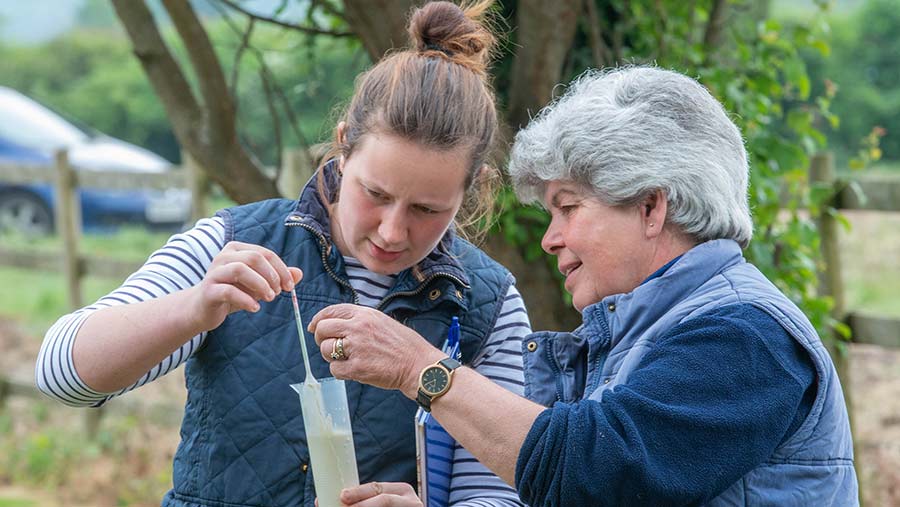
© BillyPix
What to look for on the label
Protein: Protein levels must support accelerated growth and tissue development in dairy calves in early life. Proteins should be milk-based for the best performance. Beef calves can be fed lower levels of protein to support more flesh than frame growth. Required level: 20-27%
Fat and oil: These will generally be made up of vegetable fats such as soya bean, palm oil and coconut. Too high a level of vegetable fats will increase the risk of scour. Required level: 16-20%
Fibre: This is a good indicator of the protein quality. Required level: Products that contain more than 0.15% contain higher milk protein. More than 0.2% means they are more heavily weighted in lower-quality plant protein sources.
Ash: Indicates the overall level of minerals. Required level: Less than 8%.
Top tips: What to check
- Is the calf milk replacer you chose backed up with research and published data?
- Has it been manufactured to a high standard?
- Will it be consistent? Each batch must be formulated in the same way.
- Is it palatable and do calves drink it well?
Feeding the calf up to weaning
What quantities to feed up to weaning?
To obtain daily liveweight gains of 0.75-1kg, calves will require a minimum of 900g of milk powder daily. Below is an example guide of how CMR should be fed from birth to weaning.
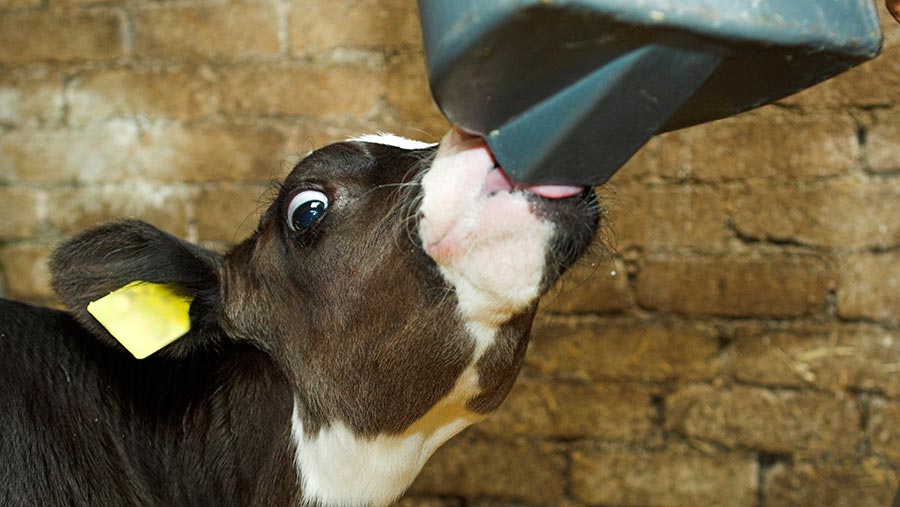
© imageBROKER /REX/Shutterstock
Feeding rates |
||||||
|
|
Days 1-3 |
Days 4-7 |
Day 7 |
Week 10 |
Week 11 |
Week 12 |
|
Feed requirements (litres) fed twice daily |
4 litres of colostrum |
Build up to at least 5 litres by day 5 |
6 litres |
OAD |
OAD |
Weaned |
|
Every 1C drop in temperature below 5C requires 2% more milk replacer. Have a min/max thermometer in the calf shed to monitor the temperature. |
||||||
Targets
Weaning
Calves should be at least double their birthweight
Calving
Heifers should be 90% of mature weight
22-24 months
Target age at first calving
226
Calves that grew at 100g extra produced this much extra milk (kg) in their first lactation, according to a study by Alex Bach from the Department of Ruminant Production IRTA in Spain
70
The monthly cost in £ of delaying age at first calving
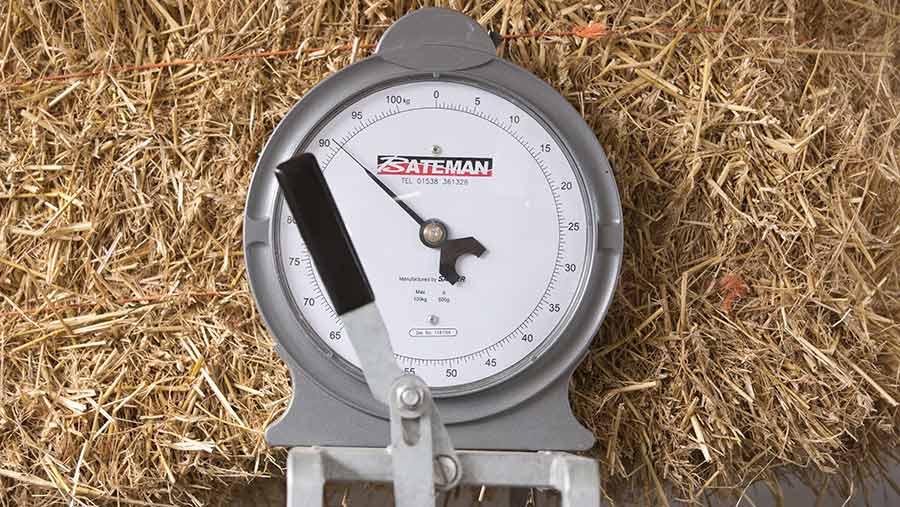
© Tim Scrivener
Milk-mixing protocols
1. Add half of the water to the bucket. Water should be 40C maximum.
2. Weigh the powder using a scale and a scoop. Remember milk and water combined should make 1 litre. For example, if feeding 900g daily, 150g of powder should be added to 0.85 litres to make up one litre.
3. Add the powder to the water and mix thoroughly using a whisk.
4. Add the remaining water and mix once again.
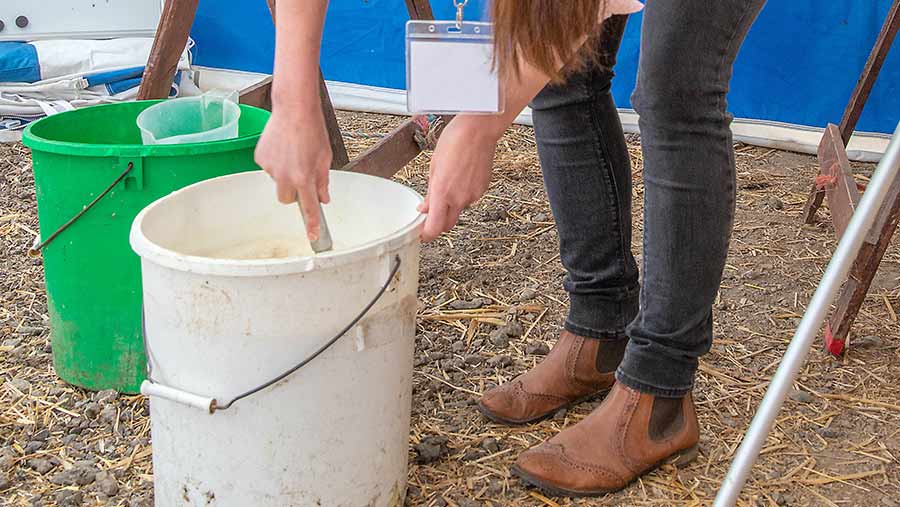
© BillyPix
Supplementary feeding
Feeding starter nuts
Feed a 20% protein product based on high-quality protein, for example soya/protected soya/distillers’ grains rather than than wheat feed and sunflower.
Provide fibre ad-lib along with chopped straw (2cm) and ensure there is plenty so calves aren’t forced to eat bedding and consume pathogens.
Water: Ensure it is clean and there is plenty. Typically, a calf will consume 4 litres of water for every 1kg of starter feed eaten.
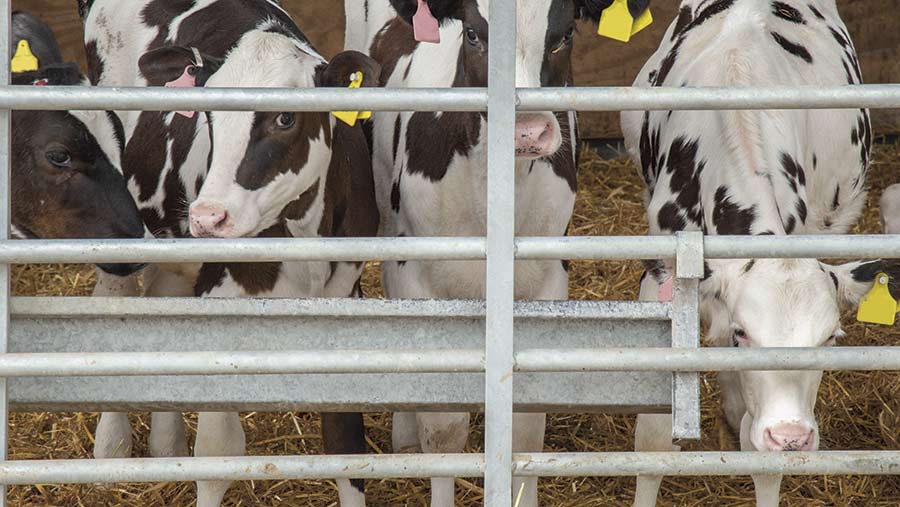
© BillyPix
Sponsors’ message
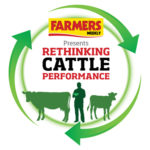
Thanks to Zoetis, Volac and XL Vets, whose sponsorship made it possible for us to run the Rethinking Cattle Performance workshop. Farmers Weekly had full editorial control of this report.
Zoetis, Volac and XL Vets are committed to supporting UK cattle farmers in running enterprises that produce healthier, more productive animals.
Part of this commitment means working with organisations such as Farmers Weekly on initiatives such as the Rethinking Cattle Performance campaign, to offer farmers the opportunity to learn from experts and their peers about the best ways to produce cattle, and particularly calves, as efficiently as possible.
